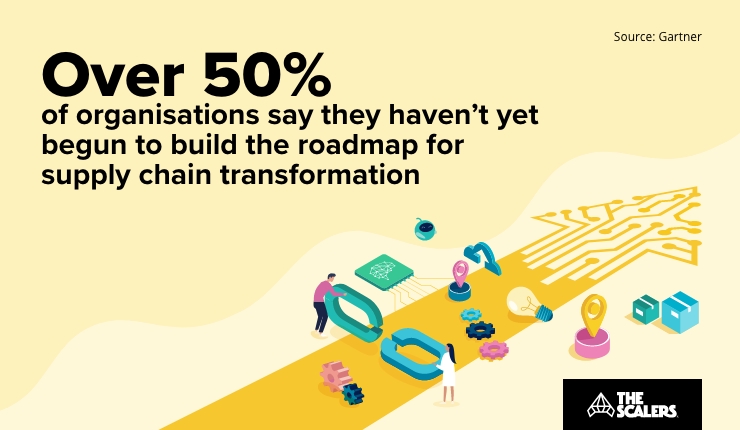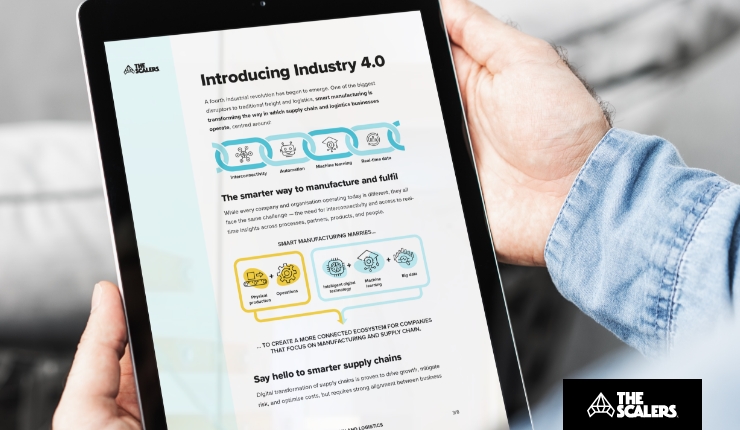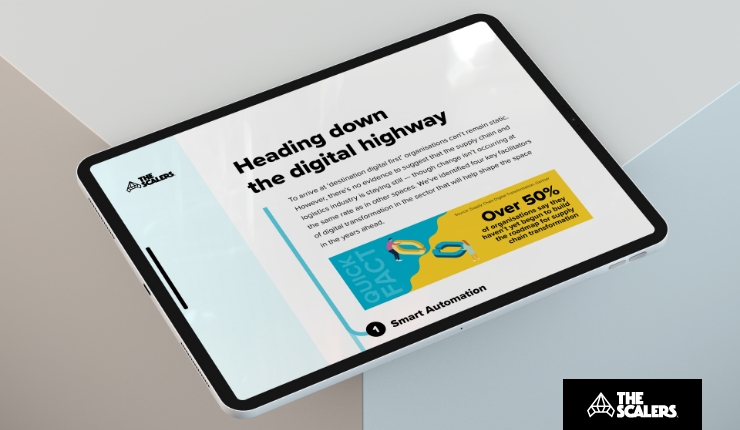Transformation has accelerated across sectors, and the supply chain and logistics industries aren’t immune to these developments. The decline in brick-and-mortar and adjacent growth of online shopping — fuelled in part by the Covid-19 pandemic — has led to major players such as Amazon and Alibaba pushing their logistics capabilities to become faster, more efficient, and more versatile. And, to go above and beyond when it comes to meeting customer expectations. Expectations, it would seem, center around hyper convenience and ultra-fast fulfillment.

Transformational models: digital-first
What does transformation mean? How is it achieved? What changes for IT functions? And most importantly, what exactly do we mean by ‘digital first’? Simply put, to go digital-first means approaching any new opportunity or strategy with the aim that the solution should be as digital as possible. It is to imagine as much of the service being created as possible being used by customers in digital form. Digital-first refers to the practice of putting emphasis on a business model that prioritizes digital processes internally and digital offerings externally.
But it isn’t just about creating new offerings. Reduction of costs, which includes warehouse optimization via digital methods, omnichannel delivery and fulfillment, and the need to meet constantly shifting consumer demands are named as primary priorities for 65% of surveyed supply chain executives when asked about updating their business models.

Industry 4.0: the fourth industrial revolution
In recent years, a fourth industrial revolution has emerged. Industry 4.0 is one of the biggest disruptors to traditional freight and logistics, transforming the way in which the industry continues to operate. It focuses heavily on interconnectivity, automation, machine learning, and real-time data. Sometimes simply referred to as ‘smart manufacturing’, it combines physical production and operations with intelligent digital technology, machine learning, and big data to create a more connected ecosystem.
Overall, business leaders that embrace Industry 4.0 are better positioned to trim costs, increase profit, and drive growth by optimizing all aspects of operations through the power of real-time insights.

Emulating the major players
It’s clear that technology sustained many organizations throughout the pandemic and now continues to redefine how they operate, move forward, and diversify. Research has highlighted that seven out of 10 boards have accelerated digital business initiatives, moving it to top priority positioning because diversification brings resilience to unexpected disruption. The supply chain and logistics industries aren’t standing still by any means, but they must move faster to give a similar level of service to customers as they’d expect from Amazon or third parties who utilize their fulfillment and distribution networks.

The way of the future
How are the major players investing their resources to retain their market share and sector dominance? Smart automation, AI and ML, blockchain, and connected-autonomous vehicles are four major ones that will in many ways bring the world of science fiction into reality. Whether it’s robotic loaders, advanced parcel tracking, or self-driving trucks, logistic companies need to be ready for the upcoming changes.
Beginning to make the necessary adjustments now can help these businesses prepare properly for the future. Ultimately, supply chain and logistics organizations must emulate the major players and embrace wholescale digitalization of processes or get left behind.

Introducing: our supply chain and logistics industry perspective paper
To arrive at ‘destination digital first’ organizations can’t remain static. While there’s little evidence to suggest that the supply chain and logistics industries are staying still, change isn’t occurring at the same rate as in other sectors. In our latest paper, we’ve analyzed the latest developments, internal attitudes to change, and identified key facilitators of digital transformation that will help shape the space in the years to come.
What will you learn?
- How internal attitude shifts to digitalisation are pushing forward transformation initiatives by several years, with IT decision makers keen to close the gap.
- How realities once firmly in the realm of science fiction are materialising, presenting supply chain and logistics businesses with new opportunities.
- How leveraging real-time data and analytics helps operators, managers, and executives to make better decisions.
- How to leverage new technologies and software to drive growth, mitigate risk, optimise costs, and exceed customer expectations.
This paper is for CTOs, CIOs, Heads of Engineering — and other senior IT decision-makers — to act as a guide as they trail the path to becoming technology and software-driven businesses. If supply chain and logistics companies are to deliver on the same level as their major player counterparts, then they need to put software at the center of their business. To achieve that, then engineers of the highest caliber are of the highest priority, and that’s where The Scalers can step in to help these organizations achieve their digital initiatives.
If you’re looking to build an engineering team to transform your business, feel free to reach out to us. One of our senior executives will get back to you shortly and help you move forward based on your requirements.
Build Your Team,
Not Just a Contract
With The Scalers’ offshore dedicated development team, you get engineers who join your workflow for the long run. Grow steadily, stay flexible, and work with people who care about the product as much as you do.











